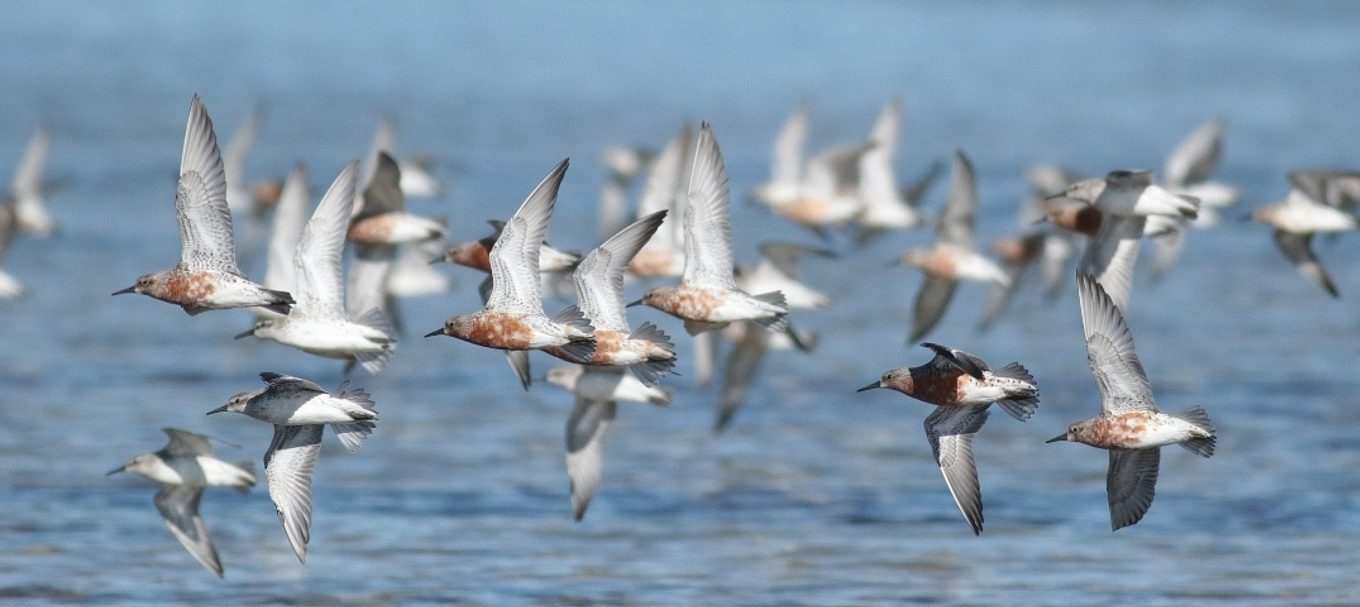
Everything you need to know about South Australia’s migratory shorebirds
Did you know that there are migratory shorebirds that return to Adelaide each year to spend summer feeding along our coastline to avoid the artctic winter in the northern hemisphere, in places like Russia and Alaska?
What are migratory birds?
A migratory bird is a type of bird that lives part of the time in one place, and the rest in another. Migration usually happens when birds travel because of changing seasonsr to find food.
Travelling between gardens doesn’t count – the two places need to be a large distance apart.
Migratory shorebirds are birds that live near water. This can be the coast, rivers or wetlands.
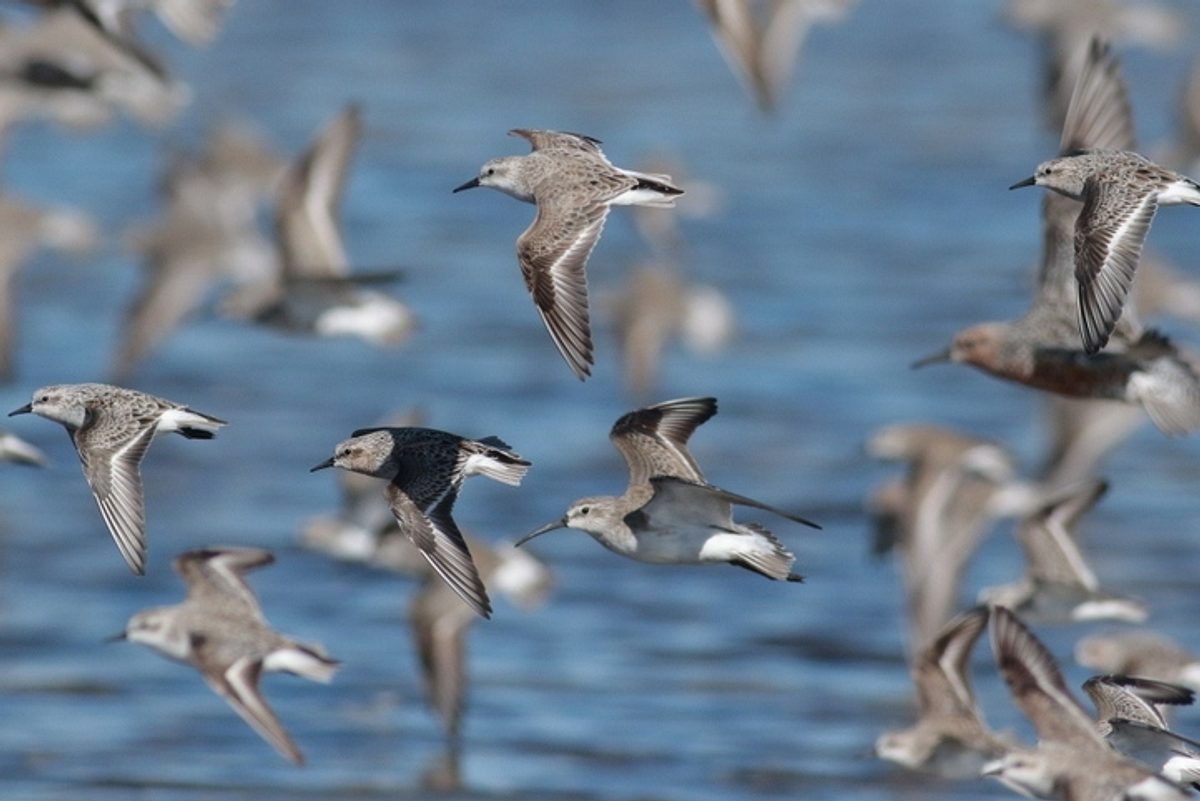
Where do the migratory birds visit in South Australia?
Many of Adelaide’s migratory shorebirds land in the Adelaide International Bird Sanctuary. The southern tip of the sanctuary is about 20 minutes north from the Adelaide city, in the Barker Inlet.
Shorebirds rely on the tidal mudflats of Gulf St Vincent, which provide important habitat for feeding, which is part of an internationally recognised migratory shorebird site: the East Asian-Australasian Flyway.
The bird sanctuary is used by more than 27,000 shorebirds birds every year – of which 14,000 are migratory shorebirds from 14 different species.
Our migratory shorebirds usually arrive in September/October and start heading home in March to breed.
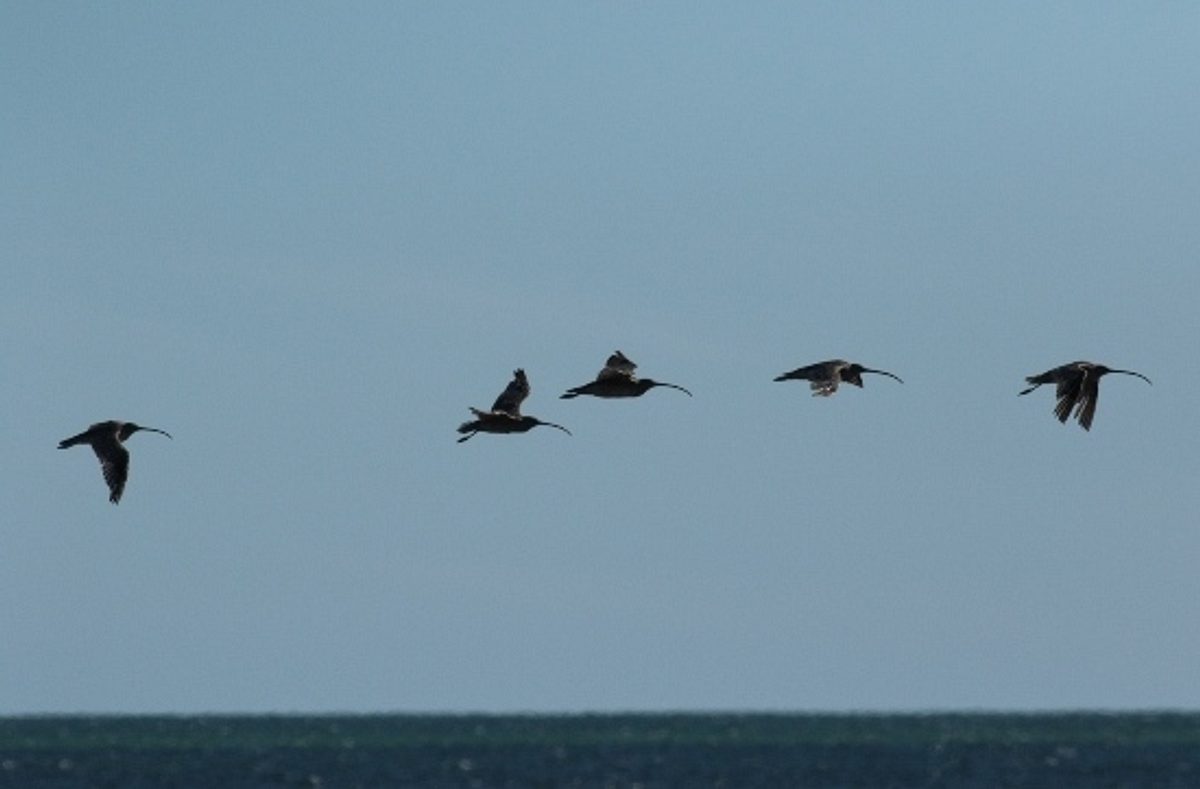
Which shorebirds can we see here?
More than 35 species of migratory and resident shorebirds – those that live there all the time – are recorded in Gulf St Vincent.
About 13 species of migratory shorebirds can be seen regularly.
This includes significant numbers of red-necked stint, sharp-tailed sandpipers and red knots.
Commonly spotted resident shorebirds include red-capped plovers, and sooty and pied oystercatchers.
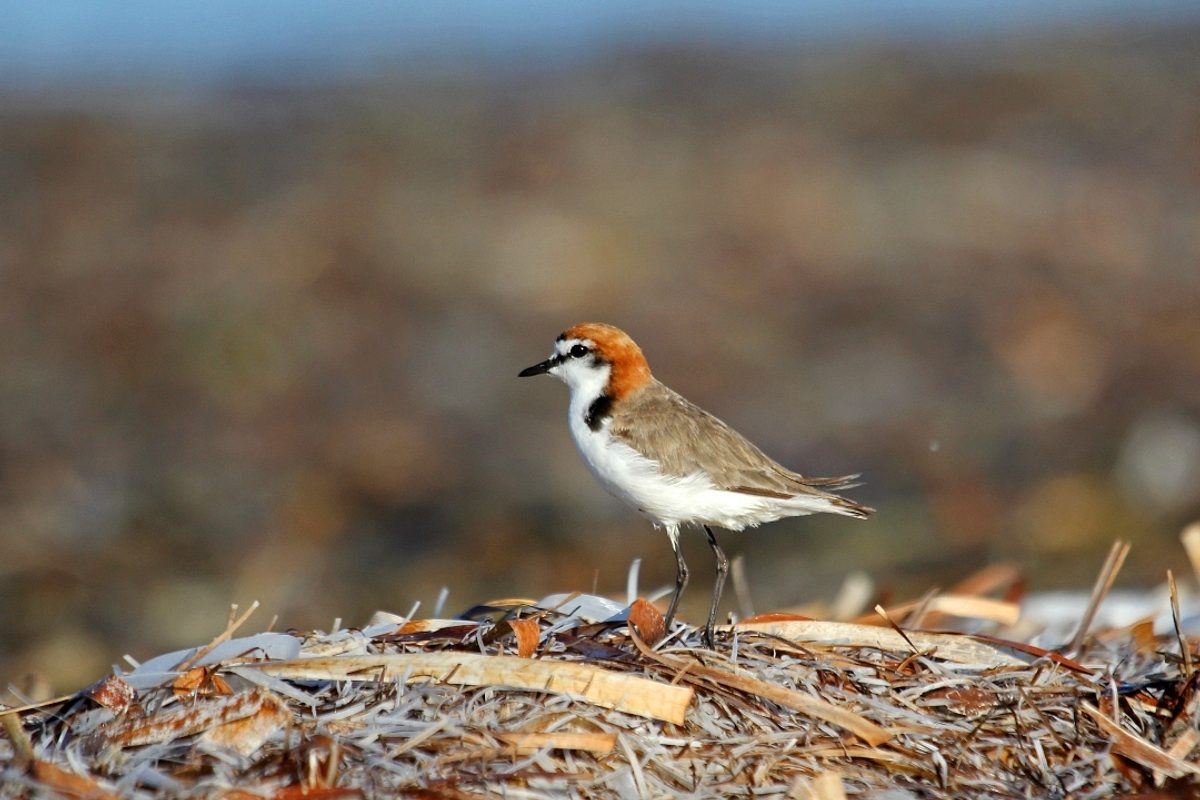
Many shorebirds that may be seen in the sanctuary are threatened globally.
This includes the critically-endangered eastern curlew and curlew sandpiper, endangered bar-tailed godwit, red knot and great knot, which are considered vulnerable.
How do migratory birds navigate?
Research suggests that birds appear to be able to "see" the earth's magnetic field lines to help them navigate their way around the globe.
Other possibilities are that they’re guided by smells and landmarks, including the stars. However they do it, it’s pretty clever!
Migratory birds usually follow the same flight paths – flyways – every year.
What flight path do these shorebirds follow?
The East Asian-Australasian Flyway is one of eight flyways across the world and it stretches across 22 countries from far-east Russia and Alaska, east Asia and south-east Asia, to Australia and New Zealand.
It is used by more than 50 million migratory shorebirds and waterbirds.
Because of the significance of the East Asian-Australasian Flyway, there are international agreements in place to help protect the birds that rely on this route for survival.
Adelaide’s most famous migratory shorebird
Go-Go godwit – a bar-tailed godwit – is our most famous local migratory shorebird, as he’s received quite a lot of media coverage in his time.
Go-Go’s formal name is AKK (a lot less exciting!), which is what he was banded with back in 2012, when he was at least two years old.
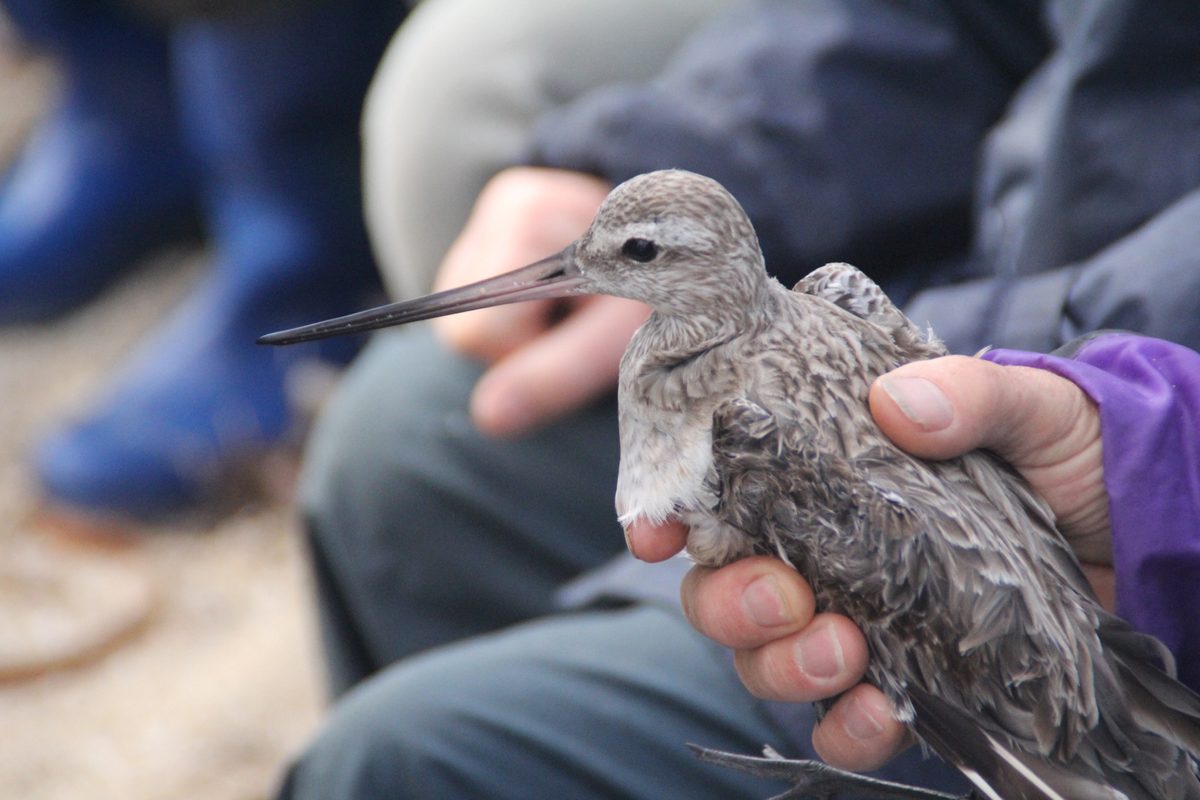
Go-Go flies up to 30,000 km each year, travelling from western Alaska, to Adelaide.
In his lifetime, he will fly almost the equivalent of Adelaide to the moon!
Two sub-species of godwit can be found in the Bird Sanctuary.
One migrates to Northern Siberia, the other to Western Alaska, but they are very hard to tell apart.
Based on back and tail-feather patterns, Go-Go looks to be a Western Alaskan bar-tailed godwit.
Go-Go’s travels have been recorded by people who have seen his leg-flag. This means that in places where there aren’t a lot of people, his visits go unnoticed.
The main records of Go-Go’s travels are from our gulf, and his usual stopover haunt: Bohai Bay in China’s Yellow Sea.
To tackle the problem of only getting records where people live, our team have tracked using tiny solar powered devices, tracked by satellites.

Two grey plovers - named CYA and CYB - were tracked from Thompson Beach to the Siberian Arctic.
They were then tracked flying more than 13,000 km from the Adelaide International Bird Sanctuary to Wrangel Island, off the coast of Russia.
Their trip included a stretch of 7,000 kilometres of non-stop flying from Adelaide to China.
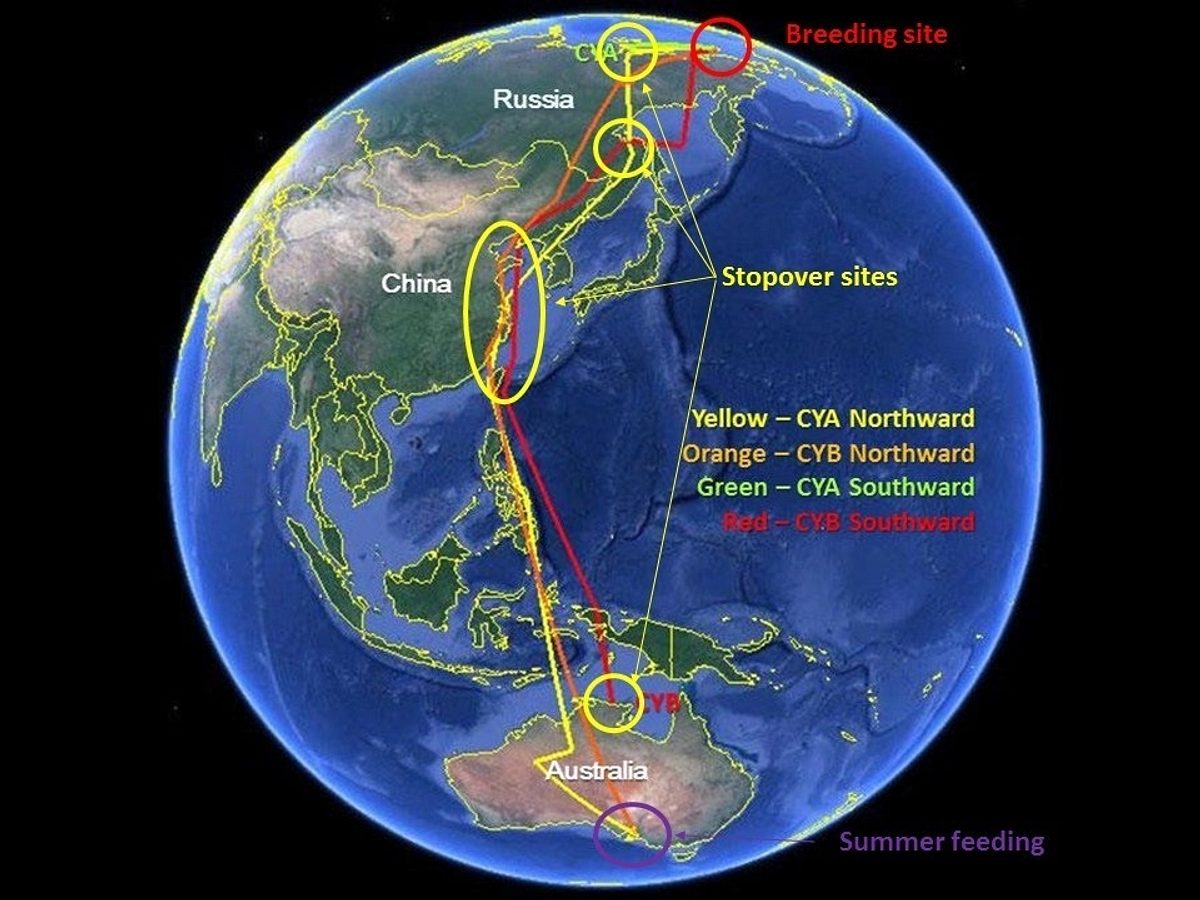
This incredible journey was tracked in a collaboration with the Victorian Wader Study Group and Friends of Shorebirds SE and Green Adelaide with Australian Government support.
How you can help keep migratory shorebirds visiting Adelaide?
Migratory shorebirds need places to rest and feed undisturbed, to fatten up here before making the epic journey home, where they will breed and then do it all over again.
Here’s how you can help:
- Keep an eye out for shorebirds at the beach, and give them plenty of space.
- Get to know the shorebirds in your area, so that you can identify them easily.
- Keep your dog on a leash and spread the word about the importance of leashing dogs at the beach.
- When boating or kayaking, be aware of where birds are roosting and avoid launching or landing in those areas.
- Help keep our beaches clean and wildlife safe. Pick up rubbish and recycle or dispose of it responsibly.
- Reduce your carbon footprint to help tackle climate change, which threatens the birds’ home in the arctic. Ways to do this include catching the bus or riding your bike more often, eating less meat and buying less stuff.
- Spread the word about shorebirds and sharing our shores with them.
- If you see sick or dead wildlife, including marine mammals and wild birds, call the Emergency Animal Disease Hotline on 1800 675 888.
Park of the month
During November, Adelaide International Bird Sanctuary National Park - Winaityinaityi Pangkara will be featured as part of the National Parks and Wildlife ServicePark of the Month, with a stack of great events and activities to be announced soon. Check our Park of the Month page to find out more.
This content was written and provided by Green Adelaide, and has been reproduced on Good Living with their permission. You can learn about Green Adelaide’s work and how you can get involved to create a cooler, greener, wilder and climate-resilient metropolitan SA by subscribing to their newsletter.
Main Image: Red knots in flight (image courtesy of Martin Stokes)
Stay in the know: Sign up to get updates from DEW, straight to your inbox!





